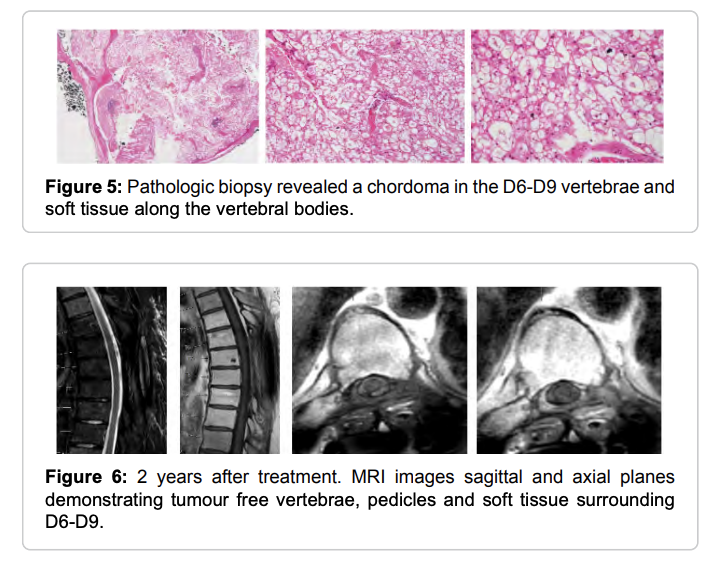Abstract Purpose: Chordomas arise from embryonic notochordal remnants along the length of the neuraxis at developmentally active sites. They constitute less than 1% of CNS tumors and r: rely occur in extra-axial locations. Chordoma in the thoracic spine is considered rare and comprises less than 15% of all chordomas.
Case study: A healthy, 42-year-old male presented with radiculating low back pain, with a sudden onset four weeks prior to this examination. He complained of paresthesias, unstable walk patterns and difficulties in urination; however, no neurologic deficits were reported. On CT and MRI, an occupying soft tissue lesion was detected with pressure on the thecal sac at the level of D6-D9 vertebrae. The lesion was irregular and diagnosed initially as a dermoid tumour. After primary debalking and fixation, the pathological biopsy revealed a chordoma. The patient had a second surgery to change the primary fixators to carbon made rods prior to Proton Beam Therapy. Discussion: According to the imaging and location of the lesion, chordoma was not the suggested diagnosis. Surprisingly, based on the histopathological results, a chordoma was diagnosed. Due to the multidisciplinary treatment approach, the patient was prepared for following radiotherapy treatment. Two years after treatment, there are no signs of a lesion or clinical signs of thecal sac involvement. Conclusion: When suspicion of an irregular space-occupying lesion arises, always act as if a malignancy is present. We recommend a multidisciplinary approach in coordination with oncologists, pathologists, the surgical team and the radiation centre for management of such cases

